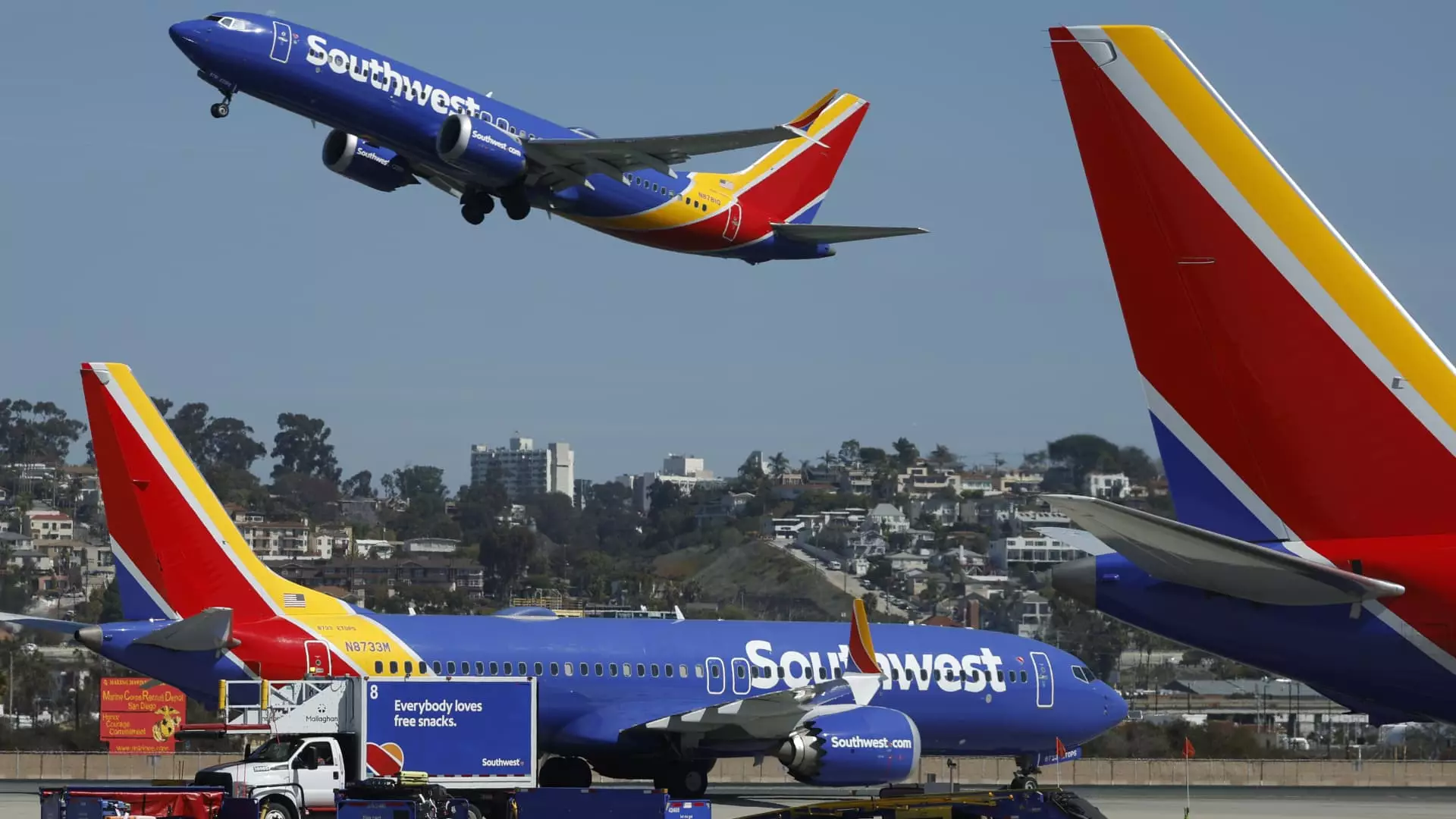In recent years, Southwest Airlines has been increasingly scrutinized over its adherence to a model that, while once revolutionary, now feels outdated in an evolving market. Since its inception, the airline has prided itself on being a no-frills carrier, offering passengers the basics at low prices. However, as consumers’ expectations shift toward luxury, comfort, and a more comprehensive travel experience, Southwest finds itself at a crossroads. CEO Bob Jordan recently expressed a willingness to explore new avenues in an attempt to win back high-spending customers – a move that can certainly be viewed as both necessary and overdue.
With low-cost airfare diminishing and economic uncertainties rising, it is imperative for Southwest to recalibrate its strategies. Jordan openly acknowledges that certain customers may choose competitors like Delta and United for their expanded offerings, including premium seating and luxurious airport lounges. This reflects a bittersweet truth: while Southwest’s dedication to providing affordable travel remains commendable, clinging too rigidly to this singular approach will only leave them adrift in an increasingly competitive sea of carriers that’s evolving to meet customers’ higher demands.
Niche Markets and Premium Experiences
The idea of introducing lounges, enhanced seating options, and long-haul international flights is one that should have been on the table long ago. In particular, the notion of tapping into the luxury travel segment could revitalize Southwest’s appeal. For instance, Jordan specifically highlighted Nashville as a market with significant demand for premium experiences. By embracing this opportunity, Southwest could not only capture a share of the high-spending customer base but also expand its brand identity into a more versatile entity.
Moreover, the establishment of airport lounges would serve more than just offering a comfortable place to relax; it would signify a transition towards acknowledgement that travelers today desire more than mere transportation. Southwest must begin to refine its image from purely budget-friendly to a carrier that understands diverse customer needs. The introduction of premium services may attract loyalty among passengers who wish to indulge in better travel experiences, thus reducing the chances of their migrating towards rival airlines.
The Risks of Stagnation
Stagnation in a time of transformative changes within the airline industry is perilous. While other major airlines innovate and introduce appealing features, Southwest risks becoming synonymous with outdated practices. For example, the impact of phasing out open seating arrangements presents concerns; the old model has been part of its brand identity, but in its current trajectory, the hapless airline has compromised its nostalgic charm without effectively replacing it with new allure.
An equally pressing issue is the matter of long-haul flights. As Jordan mentions the prospect of Southwest servicing European destinations, one cannot help but feel that the airline may be trailing its competitors in recognizing the relevance of such an expansion. While partnerships with airlines like Icelandair and China Airlines are commendable first steps, they are not substitutes for a cohesive long-haul service offering. Customers are seeking seamless travel options; failing to provide this could lead both business and leisure travelers to look elsewhere.
Customer Loyalty in a Competitive Landscape
Understanding customer loyalty is critical in this increasingly competitive environment. The allure of luxury travel is strong, and for many, it’s an essential part of the journey experience rather than just the destination. The presence of co-branded credit cards, additional amenities, and loyalty programs are effective measures that can cement customer allegiance. If Southwest fails to adapt its loyalty initiatives to mirror that of competitors who have made significant investments in premium offerings, it stands to lose its market share.
By remaining in a static position, one risks falling into a crowded field where future growth opportunities evaporate as more reasonable offerings from competitors attract a wider audience. What might seem trivial can have a significant impact; modern consumers are increasingly discerning and abundantly informed. Thus, offering basic functionalities without exploring premium facets may mean relinquishing their interest to airlines that declare, “Your needs matter!”
Throughout the discussions initiated by Bob Jordan, there is hope for a brighter future for Southwest Airlines, but action must follow this dialogue. The strategies that emerge must align with contemporary expectations and present-day realities. As competitors continue to raise the bar, any delay could be detrimental not only to the airline’s image but to its very existence. It is essential for Southwest to rekindle its relevance in an atmosphere where “good enough” simply won’t suffice.

